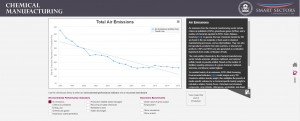A little over a year ago, we shared the Environmental Protection Agency’s (EPA) Draft Strategic Plan and that one of their three goals was “cooperative federalism” rather than a top down management/regulatory approach. This was a significant change in the philosophy of how to manage environmental issues.
Memorandum Makes Change Official
Reinforcement of this general change in philosophy at the EPA was evident in a memo: Transition from National Enforcement Initiatives to National Compliance Initiatives.
The memo was from Susan Parker Bodine to Regional Environmental Protection Agency Administrators (August 21, 2018). The tone of the memo is clearly focused on compliance, stating “The EPA’s FY 2018-2022 Strategic Plan includes enforcement-related strategic measures to increase the environmental law compliance rate and reduce the average time from violation identification to correction.”
The memo also states that the goals have always been on improving compliance and reducing pollution. The EPA says that they have often used enforcement actions as well as other compliance assurance tools, such as compliance assistance and compliance alerts.
However, to better convey the message that increased compliance is the goal, and enforcement actions are not the only tool for achieving this goal, the EPA will change the name of its priorities from National Enforcement Initiatives to National Compliance Initiatives.
Fewer Emissions to the Environment
The memo goes on to tout past progress as a nation with respect to various EPA initiatives.
“The EPA’s work has increased compliance and reduced pollution in the priority areas. For example, under the initiative to Keep Raw Sewage and Contaminated Storm water Out of Our Nation’s Waters, 97% of large combined sewer systems, 92% of large sanitary sewer systems, and 70% of Phase 1 municipal separate stormwater systems are now either in compliance, or are on an agreed upon schedule to come into compliance. Under the initiative to Reduce Air Pollution from the Largest Sources, EPA enforcement actions addressing Clean Air Act violations have resulted in annual reductions of over 2.8 million tons of NOx and SO2 air pollution emissions.”
The reductions in emissions are also evident in the US EPA Smart Sectors Snapshots. You can gather a variety of data from the site. As an example, we’ve included the Total Air Emission Data from Chemical Manufacturing below (Image Credit USEPA):

2019 Environmental Compliance Initiatives
The memo from Susan Bodine also includes the Compliance Initiatives for Fiscal Year 2019.
- Keeping Industrial Pollutants out of the Nation’s Waters
- Prevent Animal Waste From Contaminating Surface and Groundwater
- Keeping Raw Sewage and Contaminated Stormwater Out of Our Nation’s Waters
- Reducing Air Pollution From the Largest Sources
- Reducing Risk of Accidental Releases at Industrial and Chemical Facilities
- Cutting Hazardous Air Pollutants
- Ensuring Energy Extraction Activities Comply with Environmental Laws
- Reducing Toxic Air Emissions from Hazardous Waste Facilities
Less Enforcement under Trump Administration
The change from enforcement to compliance is more than just lip service. According to EHS Daily, overall during its first year, the EPA under President Trump initiated about 50% fewer enforcement cases than the three previous presidential administrations. The reductions were primarily in the Clean Air Act and the Clean Water Act.
Increased State Environmental Enforcement
As the EPA moves toward cooperation, it is expected that the states will take the lead on environmental compliance and enforcement efforts. To that end, last month we sent an “Alert” to our clients suggesting that there appears to be an uptick in enforcement (See: ). After we sent the alert, we received notes from a couple of our clients reinforcing that the state is being more aggressive in their enforcement efforts.
Environmental Compliance
Federal/State enforcement activity aside, compliance with environmental regulations remains a top priority for most in the regulated community. However, as is evident in the recent employment reports, the United States is at full employment.
Many of the manufacturing companies are running two or three shifts. This often means (1) finding time to assess and update compliance issues is difficult and (2) increased production may also mean increased emissions that may not be factored in to permits. If this describes you, we can help with environmental compliance services.
If you would like additional information about our compliance-related services, you can contact me at 248-932-0228.
